Fixed Line Muddler Minnow
Fixed line Muddler Minnow? Are you kidding?
Three years after developing the Keeper Kebari, which I've frequently called the best fly I've ever used for bass, I "discovered" what has proven to be the second best fly I've used for bass. It might actually be just as effective, but I haven't used it as much.
It isn't nearly as easy to tie as a Keeper Kebari, but I do like the fly a lot.
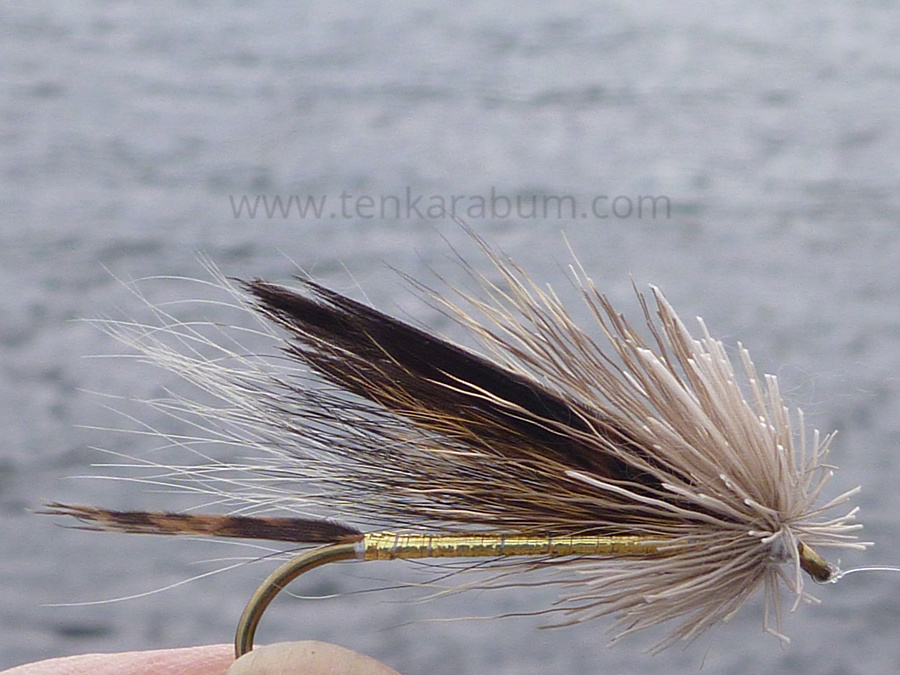 Don Gapen style Muddler Minnow (kind of)
Don Gapen style Muddler Minnow (kind of)I put the "discovered" in quotes because the fly has been around for
over 80 years! It's just that I discovered a Muddler Minnow - specifically a Muddler
tied very much like Don Gapen first tied it in 1936 - is really an excellent bass fly!
The Muddler Minnow is known as a trout fly, and was originally tied to catch the large brook trout in Ontario's Nipigon River, but it provides quite an attractive mouthful for bass.
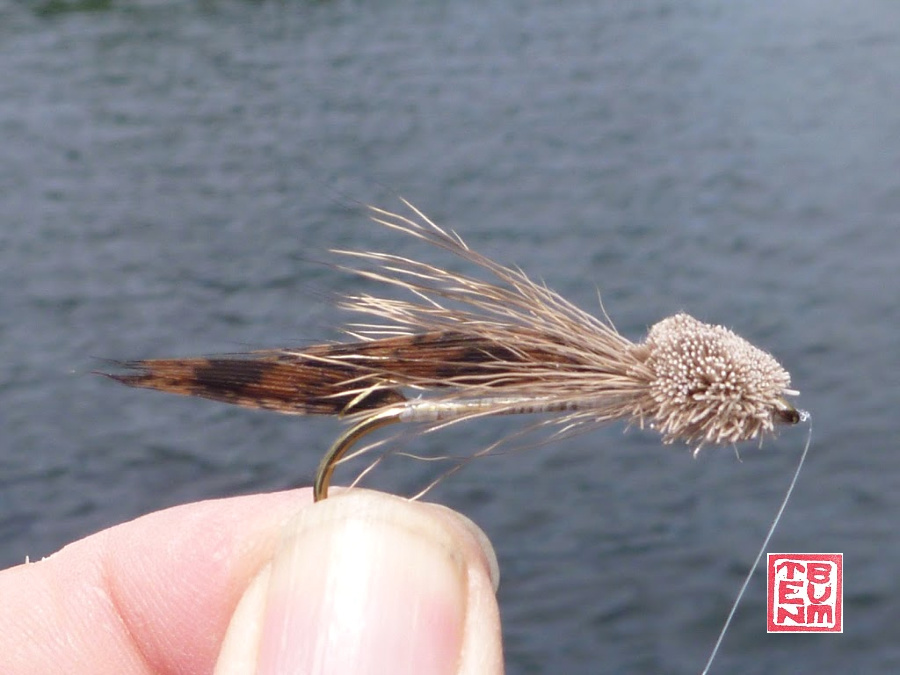 Tightly packed and clipped Muddler Minnow
Tightly packed and clipped Muddler MinnowWhen most people think of a Muddler Minnow, they think of a fly with a
carefully clipped, tightly packed spun deer hair head. That is not at
all how Don Gapen tied the fly. Even my untrimmed, scruffy fly in the
first image is too neat - by far. The original Muddler Minnow was very
scruffy (very, very scruffy), not at all tightly packed and not at all neatly trimmed.
The
clipped, tightly packed head was an adaptation by Dan Bailey, who owned a
fly shop in Livingston, Montana. Dan Bailey modified the fly in the 50's, giving it a tightly packed deer hair head so it would
float and could be used to imitate a grasshopper. Gapen's original Muddler Minnow sank and was tied to imitate a sculpin. The versatility of the Muddler Minnow
is clearly illustrated by the fact that it can be tied to imitate a
floating insect or a bottom dwelling fish (and maybe by the fact that Dan Bailey's Outdoor Co. and The Gapen Company are both still in business to this day).
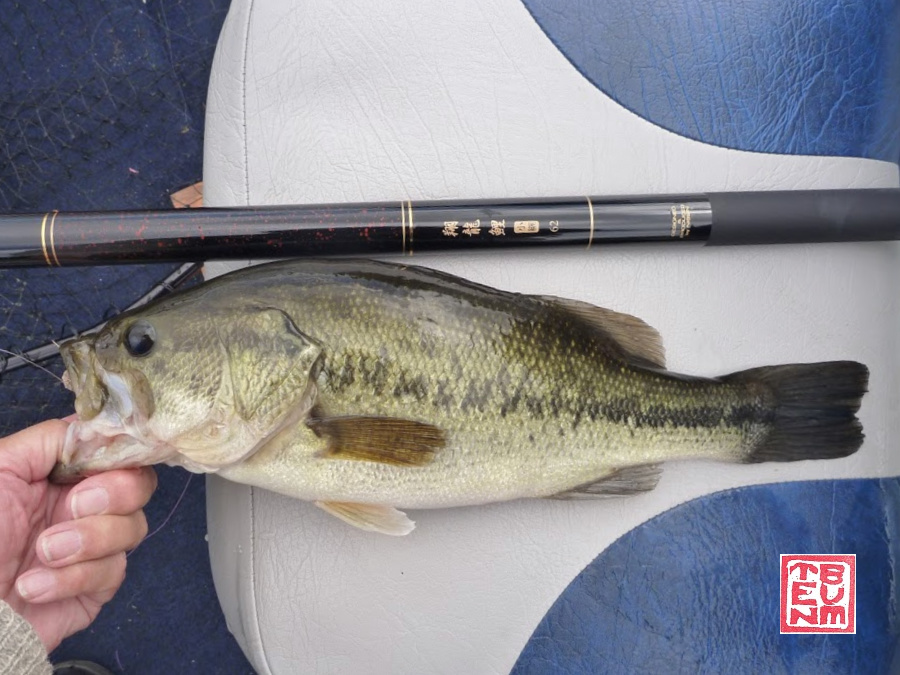
You can just barely see the Muddler Minnow peeking out of the largemouth's mouth. Although I was using a carp rod at the time, you can fish a fixed line Muddler Minnow with a firm keiryu rod or tenkara rod.
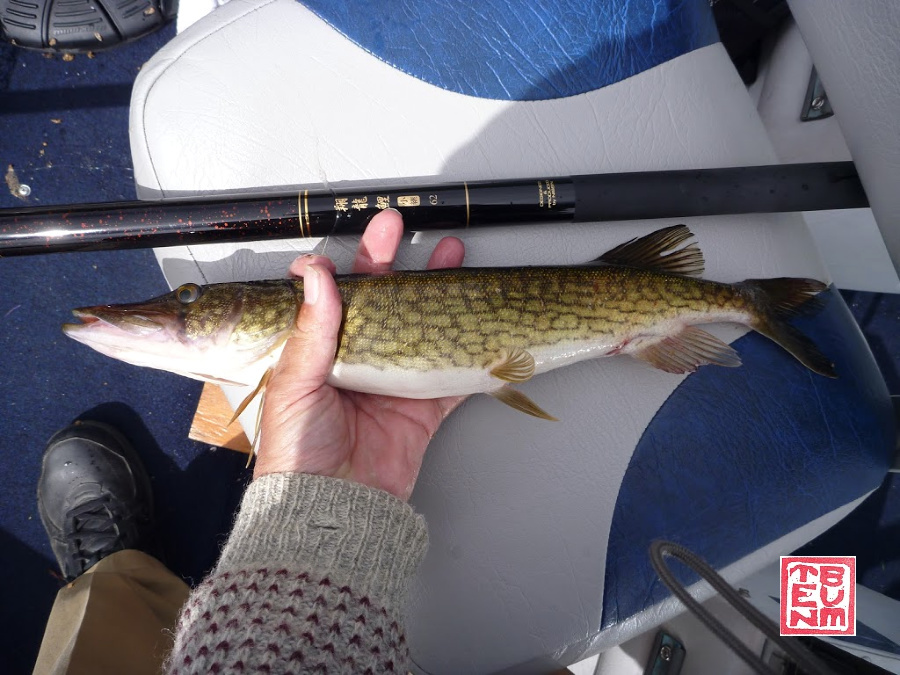
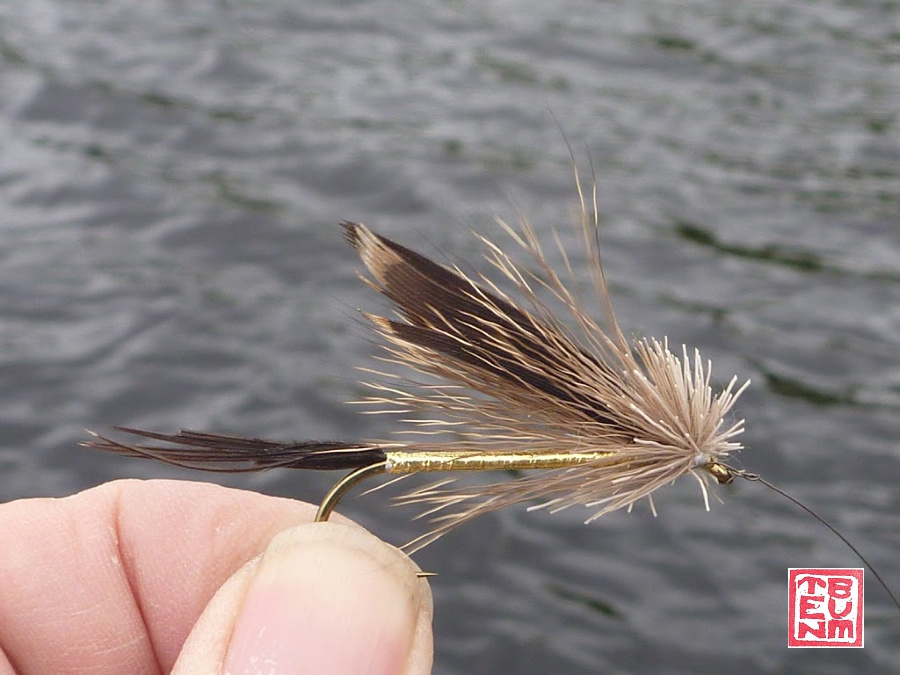 Fixed Line Muddler Minnow for Pickerel - Wire Leader
Fixed Line Muddler Minnow for Pickerel - Wire LeaderThe carp rod was more for the fish than for the fly. You can't see the Muddler Minnow in the pickerel's mouth, but it's in there. The carp rod helped cast the titanium line, too.
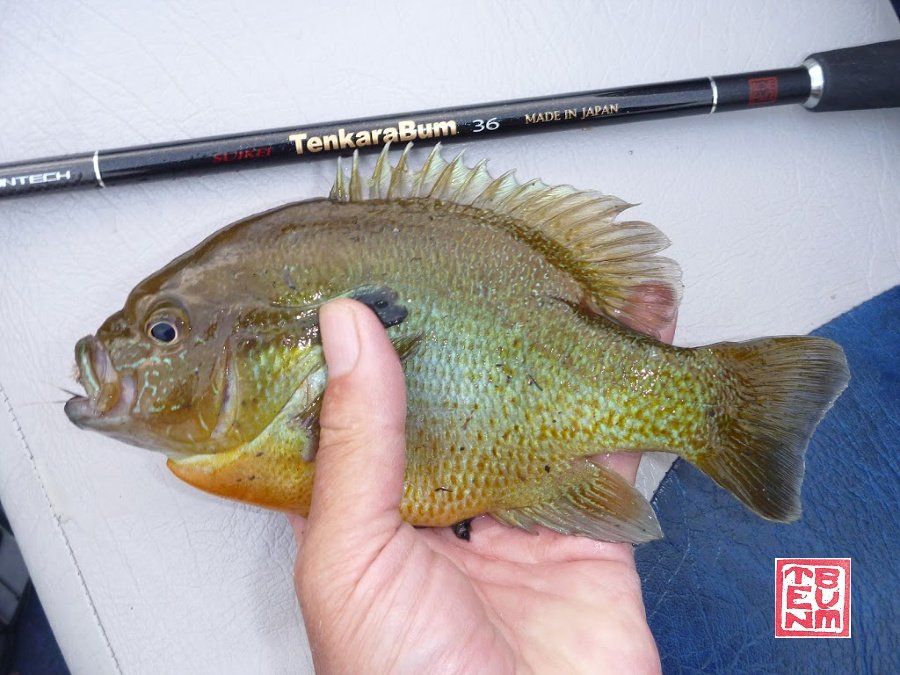
You can just barely see the Muddler Minnow peeking out from the redbreast sunfish's mouth. The TenkaraBum 36 has plenty of backbone to cast a fixed line Muddler Minnow!
You could fish a Muddler Minnow with a seiryu rod if you tied it on a smaller hook. Be careful, though. Even a small Muddler can attract a big fish.
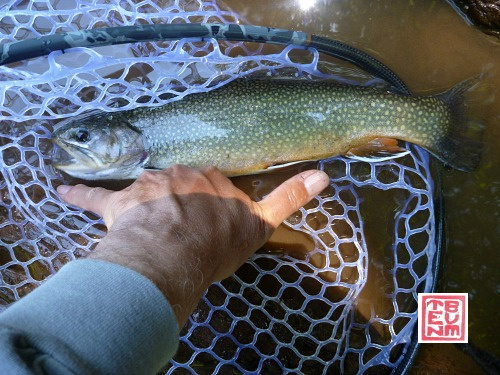
As good as the fly is for bass, pickerel and sunfish, Don Gapen did not develop it as a bass fly. He originally tied it to catch large brook trout. This is one of the largest brook trout I have ever caught. My spread pinky and thumb measure about 8.5 inches. That puts this brookie at about 14 inches, which would be small for the Nipigon River but pretty respectable anywhere else. I'm sure it was stocked, but it was still a nice fish, caught with a Muddler Minnow and a TenkaraBum 36.
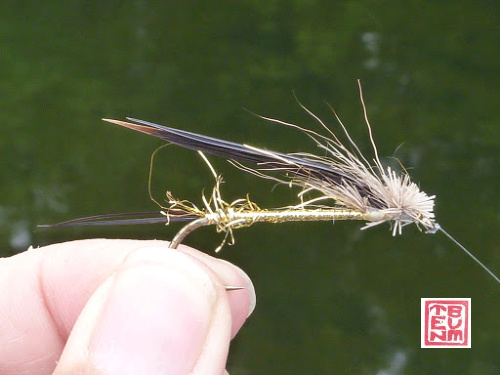
A Muddler Minnow will continue to catch fish even after the squirrel hair has been chewed off or fallen out, after the deer hair is nearly gone and after the tinsel is a mess. It will still have a vaguely minnow shape and it will work until you lose it or just can't stand looking at it any more.
Fixed Line Muddler Minnow
Step by Step
I must apologize for the quality of the photos. I finished the tying sequence before looking at any of the shots, so I didn't realize the photos picked up those strange dark bars on the background.
I could also apologize for the poor quality of the tying, but if there's one thing I've learned about fly tying since I started tenkara fishing, it is that presentation is much more important than how pretty your fly is. The fish truly don't care.
|
1. Start with a fairly large streamer hook. This is a Daiichi 2220 (4XL) size 6. I think the Muddlers in the photos above were tied on size 4 hooks. I've started the thread at the eye and wound down to almost the hook point, where I tied in a piece of gold mylar tinsel. You could start near the hook point and tie in the tinsel right there. Since you will not be packing the deer hair tight, tight, tight, you can use regular 6/0 tying thread. |
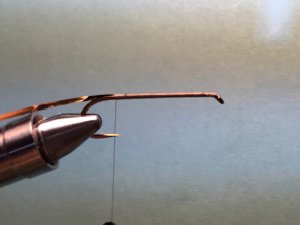 |
|
2. Clip matching slips from two opposite turkey wing feathers. You can also use peacock wing feathers, but Don Gapen used turkey. Use a pinch wrap to attach them. If you are unfamiliar with a pinch wrap, Google and YouTube can teach you how. |
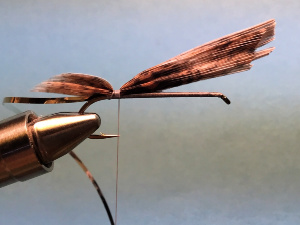 |
|
3. Without cutting the excess wing slips, wrap your thread up to where you will attach the squirrel tail and the wings. That keeps the body all the same diameter. I wrapped a bit too far forward this time. Then clip the tag ends of the wing slips. |
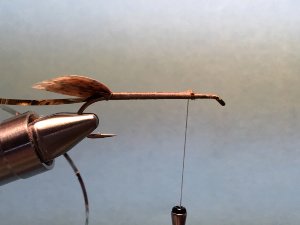 |
|
4. Wrap the tinsel to where your thread is waiting, tie it off and clip the excess. Mylar tinsel stretches, allowing you to overlap each wrap slightly, which will prevent gaps. With metal tinsel, you would have to wrap carefully, with no overlaps and no gaps. Tie in a bit of squirrel tail with a pinch wrap. Don Gapen used gray squirrel. Red squirrel would work also, and might even look better if you use turkey feathers with more of a reddish brown color. Don't bother stacking the hair first. The fish don't care. |
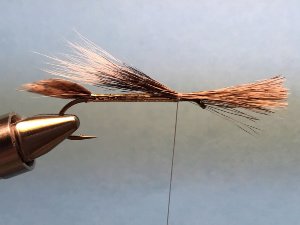 |
|
5. Cut the excess hair. Put a drop of cement on the cut ends. Squirrel tail hair is quite slick and the cement keeps it from falling out after a few fish. It will eventually fall out but by then it will have caught way more than a few fish. |
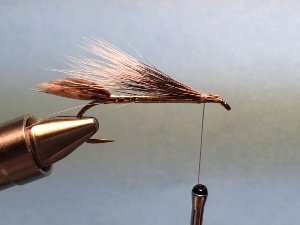 |
|
6. Cut matching wing slips from opposite turkey wings. Cut them a bit thicker than the ones you used for a tail. Pinch wrap in place, tie down firmly and cut the excess. They must be tied down firmly because you will be spinning the deer hair right over them, and they will want to spin with it. |
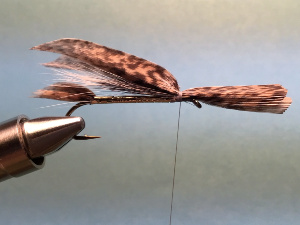 |
|
7. Cut a modest bunch of deer hair, no bigger around than a pencil. Pull out the underfur but don't bother stacking the hair. Neatness doesn't count for a Gapen-style Muddler. Lay it on top of the hook shank, take two loose wraps and then tighten by pulling up on the thread, letting the hair spin around the hook shaft. Take a few wraps through the deer hair, trying not to tie any hair down. Form a small head and whip finish. |
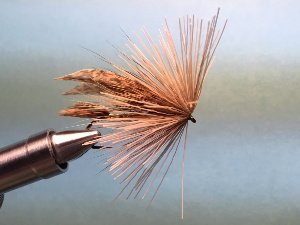 |
|
8. After a quick trim of the butt ends of the hair, trying not to cut any of the tip ends of the hair, I find it easier to shape the scraggly head by taking the fly out of the vise and holding in in my hand so I can move it all around to get a somewhat symmetrical shape. For this shot I put the finished fly back in the vise. Could have trimmed a bit more off the bottom. |
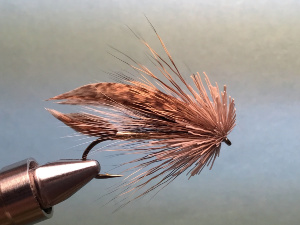 |
Compared to a Dan Bailey style, closely-clipped Muddler Minnow, the large, shaggy head allows the fly to sink after it has become saturated. It moves a lot more water when you retrieve the fly and presents a completely different profile. I'm not sure what the fish think it is. All I can say is that it works really well.
TenkaraBum Home > Tenkara Flies > Fixed Line Muddler Minnow
“The bitterness of poor quality remains long after the sweetness of low price is forgotten” - Benjamin Franklin
"Be sure in casting, that your fly fall first into the water, for if the line fall first, it scares or frightens the fish..." -
Col. Robert Venables 1662
As age slows my pace, I will become more like the heron.
We've all had situations where seriously chewed up flies kept catching fish after fish after fish. It is no sin to tie flies that come off the vise looking seriously chewed up.
Warning:
The hooks are sharp.
The coffee's hot.
The fish are slippery when wet.
Beware of the Dogma
Seriously, all the hooks sold on TenkaraBum.com, whether packaged as loose hooks or incorporated into flies, are sharp - or as Daiichi says on their hook packages, Dangerously Sharp. Some have barbs, which make removal from skin, eyes or clothing difficult. Wear eye protection. Wear a broad-brimmed hat. If you fish with or around children, bend down all hook barbs and make sure the children wear eye protection and broad-brimmed hats. Be aware of your back cast so no one gets hooked.
Also, all the rods sold on TenkaraBum.com will conduct electricity. Do not, under any circumstances, fish during a thunder storm. Consider any fishing rod to be a lightning rod! Fishing rods can and do get hit by lightning!
What's in stock?
Kurenai II AR 30F
Kurenai II AR 33F
Kurenai II AR 39F
TenkaraBum 33
TenkaraBum 36
TenkaraBum 40
Nissin Oni Tenkara Line
Coming Soon
January
Furaibo TF39
Furaibo TF39TA
Latest Pages
If you enjoy spin fishing or baitcasting please visit my sister site Finesse-Fishing.com.


